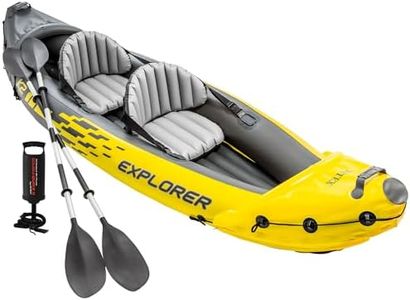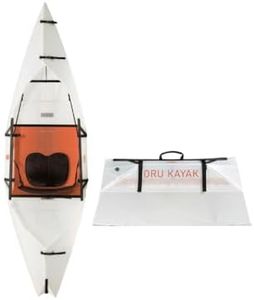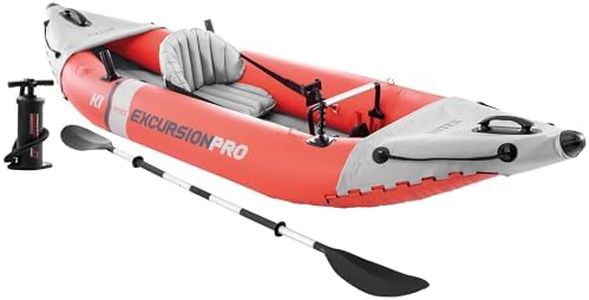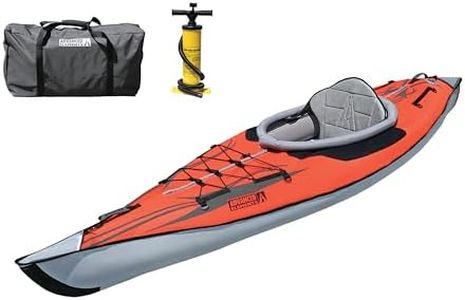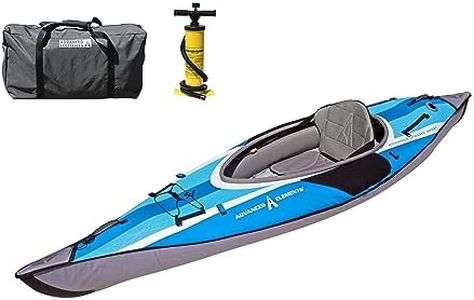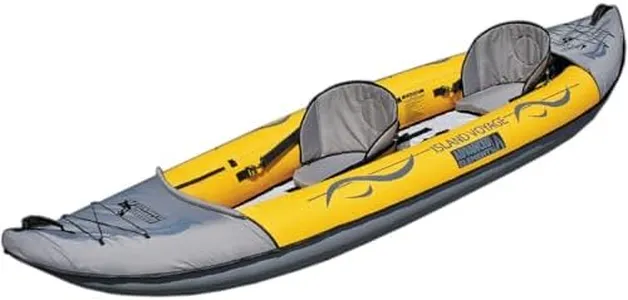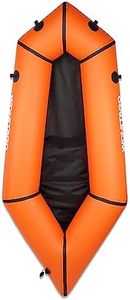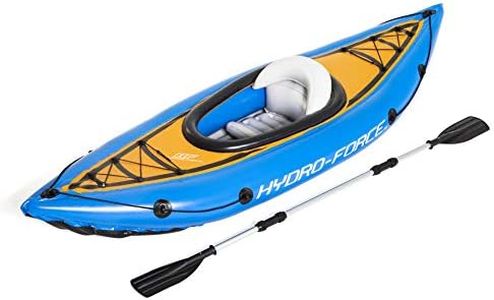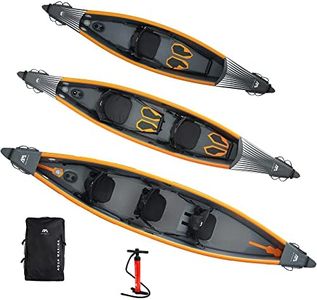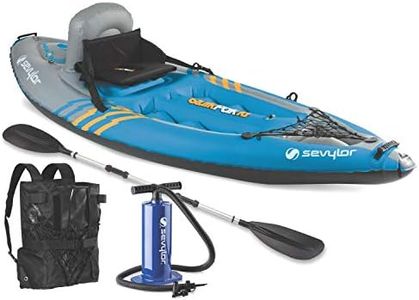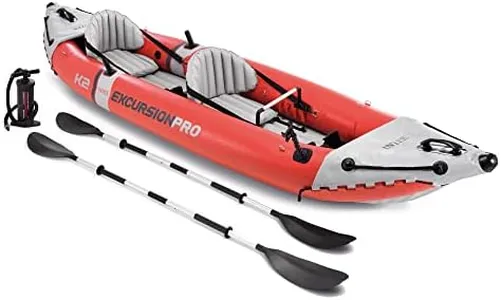We Use CookiesWe use cookies to enhance the security, performance,
functionality and for analytical and promotional activities. By continuing to browse this site you
are agreeing to our privacy policy
10 Best Lightweight Kayak
From leading brands and best sellers available on the web.Buying Guide for the Best Lightweight Kayak
When picking a lightweight kayak, your main focus should be on matching the kayak’s design and features with how you plan to use it. Think about where you want to paddle—calm lakes, rivers, or coastal waters—and how easy it should be to carry, transport, and store. The right choice will give you a balance between weight, durability, stability, and paddling performance. Start by thinking about your own skill level, how far you'll carry it, and what kind of activities—like recreation, touring, or fishing—you want to do in the kayak.WeightWeight refers to how heavy the kayak is, usually listed in pounds or kilograms. This is important because a lighter kayak is much easier to carry, load onto a car, and launch by yourself. However, lighter kayaks can sometimes be less stable or more prone to wind. Kayaks are typically divided into very lightweight (under 30 pounds), mid-weight (30-45 pounds), and heavier (over 45 pounds) segments. If you want something you can easily carry alone or need to hike to the water, go for the lightest option. If you value more stability or have extra help, a slightly heavier kayak might work fine.
MaterialKayaks come in a variety of materials, which affects both weight and durability. Common materials include plastic, fiberglass, carbon fiber, and inflatable fabrics. Plastic is heavier but very rugged, fiberglass and carbon fiber are much lighter but can be more expensive and require careful use, and inflatables are super lightweight and compact but might not perform as well in choppy conditions. Choose the material based on how durable and portable you want your kayak to be, and how carefully you plan to handle it.
Length and WidthThe length and width, or beam, of a kayak determines how it paddles and how stable it feels. Longer kayaks (over 12 feet) generally glide faster and track straighter, making them good for longer trips or open water. Shorter kayaks (under 10 feet) are easier to turn and handle, which is ideal for small lakes or rivers. Wider kayaks are more stable and great for beginners, while narrower kayaks feel faster but a little less steady. Choose the size and shape that matches your comfort level and paddling plans.
Type of KayakThere are different types of kayaks such as sit-on-top, sit-inside, and inflatables, each serving different needs. Sit-on-tops are easy to get on and off and are great for warm weather or casual use. Sit-inside kayaks give more protection from splashes and may be better for cooler or rougher conditions. Inflatables are super light and portable but may not provide the same sturdiness or speed as hard-shell kayaks. Decide which type fits your comfort and environment best.
CapacityCapacity is the total weight the kayak can safely carry, including you and any gear. A higher capacity means you can bring more equipment or handle heavier paddlers, but sometimes leads to a heavier kayak. Values are usually split into under 250 pounds for light users and minimal gear, 250-350 pounds for average users with some cargo, and over 350 pounds for larger paddlers or those with lots of gear. Choose a kayak with a capacity that meets your needs without going needlessly high.
Portability FeaturesFeatures like carry handles, folding or modular designs, and whether the kayak can fit in a trunk or backpack all affect portability. If you expect to move your kayak often or have limited storage, look for these thoughtful touches. Segment your options by how far you need to carry the kayak and how much lifting you can comfortably do alone.
